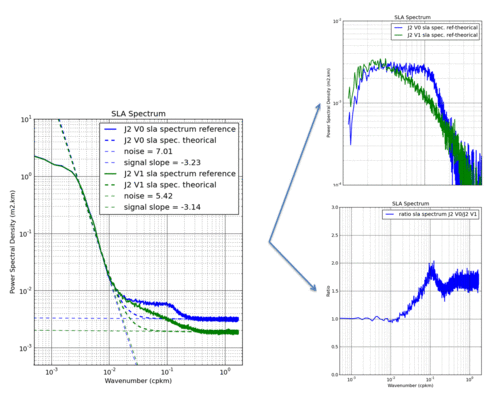Abstract's details
Improving altimeter sea level calculation at small ocean scales
CoAuthors
Event: 2016 Ocean Surface Topography Science Team Meeting
Session: Quantifying Errors and Uncertainties in Altimetry data
Presentation type: Type Oral
Contribution: PDF file
Abstract:
The better observation of mesoscale and sub-mesoscale oceanic structures is a major challenge of altimetry community in the future years. Indeed, to date, the sea level content provided by most of the conventional altimeters does not allow the observation of ocean scales smaller than 80-100km. (Dibarboure et al., 2014) has shown that this limitation is mainly due to the footprint contamination in relationships with particular sea state events related with rain cells or sigma-blooms for instance. However, the altimeter processing can have a strong impact on sea level performances at these small scales, as for instance the choice of retracking algorithms or methods to remove spurious sea-level measurements (called “editing” hereafter). Furthermore (Dibarboure et al.,2014) also shown that the smaller across-track resolution brought by SAR-mode altimetry allows to avoid this kind of artifact. In this way, the global SAR-mode coverage ensure by the recent Sentinel-3a mission (launched in February 2016), should significantly improved the observation and the understanding of small ocean scales.
First of all, in this study, we address to users the current limitation of LRM measurements at these scales basing our analyses on Jason-2 (in Ku band) and SARAL/Altika (in Ka band). For this exercise, we have reprocessed the high rate measurements derived from Jason-2 (20-Hz) and Saral/Altika (40 Hz) using the same altimeter standards. Secondly, we present the results obtained by improving this both datasets with 1) a new editing algorithm based on the consistency between consecutive along-track sea level measurements; 2) and a new empirical algorithm which aims at reducing the retracker-related noise in sea level measurements based on the method developed by (Zaron et al., 2016). Finally, a comparison with the first Sentinel-3a SAR-mode results is performed over global ocean, leading to a discussion about the remaining limitations with LRM measurements and the ability of Sentinel-3 measurements to observe small ocean scales.
References:
- Dibarboure, G., F. Boy, J. D. Desjonqueres, S. Labroue, Y. Lasne, N. Picot, J. C. Poisson, and P. Thibaut, 2014: Investigating short-wavelength correlated errors on low-resolution mode altimetry. J. Atmos. Oceanic Technol., 31, 1337–1362, doi:10.1175/JTECH-D-13-00081.1
- Edward D. Zaron , Robert deCarvalho, 1016. Identification and Reduction of Retracker-Related Noise in Altimeter-Derived Sea Surface Height Measurements. Journal of Atmospheric and Oceanic Technology, p201-210, 10.1175/JTECH-D-15-0164.1 [doi]
First of all, in this study, we address to users the current limitation of LRM measurements at these scales basing our analyses on Jason-2 (in Ku band) and SARAL/Altika (in Ka band). For this exercise, we have reprocessed the high rate measurements derived from Jason-2 (20-Hz) and Saral/Altika (40 Hz) using the same altimeter standards. Secondly, we present the results obtained by improving this both datasets with 1) a new editing algorithm based on the consistency between consecutive along-track sea level measurements; 2) and a new empirical algorithm which aims at reducing the retracker-related noise in sea level measurements based on the method developed by (Zaron et al., 2016). Finally, a comparison with the first Sentinel-3a SAR-mode results is performed over global ocean, leading to a discussion about the remaining limitations with LRM measurements and the ability of Sentinel-3 measurements to observe small ocean scales.
References:
- Dibarboure, G., F. Boy, J. D. Desjonqueres, S. Labroue, Y. Lasne, N. Picot, J. C. Poisson, and P. Thibaut, 2014: Investigating short-wavelength correlated errors on low-resolution mode altimetry. J. Atmos. Oceanic Technol., 31, 1337–1362, doi:10.1175/JTECH-D-13-00081.1
- Edward D. Zaron , Robert deCarvalho, 1016. Identification and Reduction of Retracker-Related Noise in Altimeter-Derived Sea Surface Height Measurements. Journal of Atmospheric and Oceanic Technology, p201-210, 10.1175/JTECH-D-15-0164.1 [doi]
